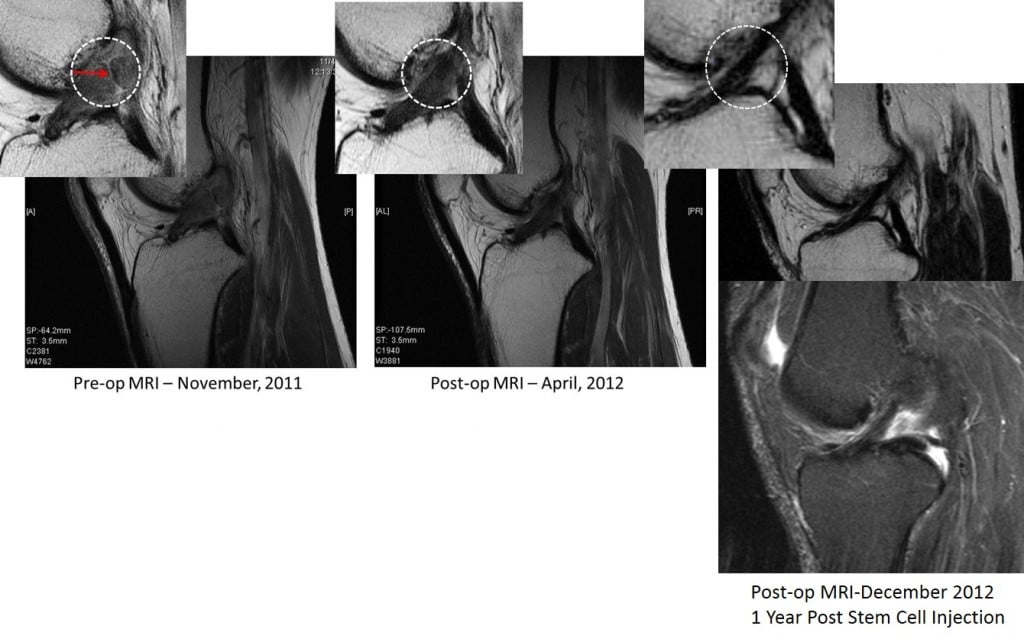MRI Follow-up of an ACL Tear Treated with Stem Cells
The question of an ACL tear treated with stem cells…. Can your torn knee ACL ligament be treated with an injection of stem cells and thus help you avoid surgery? Above you’ll find the knee MRI of a patient who had a complete non-retracted ACL tear who Dr. Hanson first treated with a stem cell injection about a year ago. You can see his pre-op MRI to the left with the obvious gap in the knee ACL ligament (red arrow). His 5 month post-op MRI is in the middle without the gap in the ACL. His 14 month MRI is to the right, showing what appears to be a normal appearing ACL ligament. How was this done? In particular, this result wasn’t accomplished via surgery, but instead by an exacting injection of the patient’s own stem cells into the ACL using the Regenexx-SD procedure.
The upshot? We’ve seen good results on yet another ACL tear treated with stem cells, to help patients avoid the need for a very invasive ACL surgery.
Not all patients who have complete non-retracted ACL tears should expect a complete recovery or that their MRI will show complete or near complete healing!

If you have questions or comments about this blog post, please email us at [email protected]
NOTE: This blog post provides general information to help the reader better understand regenerative medicine, musculoskeletal health, and related subjects. All content provided in this blog, website, or any linked materials, including text, graphics, images, patient profiles, outcomes, and information, are not intended and should not be considered or used as a substitute for medical advice, diagnosis, or treatment. Please always consult with a professional and certified healthcare provider to discuss if a treatment is right for you.
